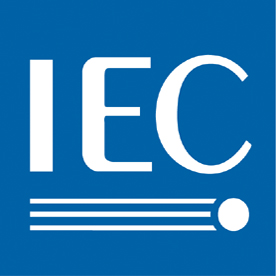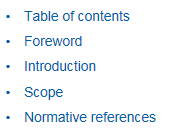ISO/IEC 14476-2:2003
Information technology -- Enhanced communications transport protocol: Specification of QoS management for simplex multicast transport
Abstract
ISO/IEC 14476-2:2003 is an integral part of ITU-T Recommendation X.ectp ISO/IEC 14476 having the main title of Enhanced communications transport protocol, which is a family of protocol specifications designed to support multicast transport services.
ISO/IEC 14476-1 provides a specification of various protocol operations for simplex multicast transport. Those protocol operations include connection management such as connection creation/termination and connection pause/resume, membership management such as late join, user leave and membership tracking, and error control for multicast data transport such as error detection and recovery.
ISO/IEC 14476-2:2003 provides a specification of QoS management for accomplishing desirable quality of service in simplex multicast transport connection.
ISO/IEC 14476-2:2003 describes the following QoS management operations:
ISO/IEC 14476-2:2003 is an integral part of ITU-T draft Recommendation X.ectp ISO/IEC 14476, which has 6 parts. All the protocol components, including packet formats and protocol procedures specified in ITU-T draft Recommendation X.606 ISO/IEC 14476-1, are also valid in ISO/IEC 14476-2:2003.
ISO/IEC 14476-1 provides a specification of various protocol operations for simplex multicast transport. Those protocol operations include connection management such as connection creation/termination and connection pause/resume, membership management such as late join, user leave and membership tracking, and error control for multicast data transport such as error detection and recovery.
ISO/IEC 14476-2:2003 provides a specification of QoS management for accomplishing desirable quality of service in simplex multicast transport connection.
ISO/IEC 14476-2:2003 describes the following QoS management operations:
- a) QoS negotiation
- For QoS negotiation, this specification assumes that a desired QoS level for multicast application service can be expressed in terms of a set of QoS parameters. QoS negotiation is performed via exchange of control packets between sender and receivers. Sender proposes the target values of QoS parameters obtained from the application's requirements, and then each receiver can propose modified values based on its system and/or network capacity. Sender arbitrates the modified values proposed by receivers. Target values for QoS parameters can be used as input parameters for reservation of network resources.
- b) QoS monitoring
- QoS control in ECTP is based on feedback of control packets from receivers. The feedback messages from receivers enable the sender to keep track of the number of active receivers and also to monitor the connection status for multicast data transport. QoS monitoring is designed to allow the sender to diagnose the connection status in terms of QoS parameter values, and thus to take the necessary actions for maintaining the connection status at a desired QoS level. The monitored connection status will be reported to the application at the sender side. The information conveyed could provide statistics useful for billing purposes, for example.
- c) QoS maintenance
- Based on feedback information from receivers, the sender takes one or more actions so as to maintain the connection status at a desired QoS level. These QoS maintenance actions include adjustment of the data transmission rate, connection pause and resume, troublemaker ejection and connection termination operations. These QoS monitoring and maintenance functions, based on monitored parameter status, provide rate-based congestion control.
ISO/IEC 14476-2:2003 is an integral part of ITU-T draft Recommendation X.ectp
Additional information
| Publication type | International Standard |
|---|---|
| Publication date | 2003-12-09 |
| Edition | 1.0 |
| Available language(s) | English, French |
| TC/SC | ISO/IEC JTC 1/SC 6 - Telecommunications and information exchange between systemsrss |
| ICS | 35.100.40 - Transport layer |
| Pages | 37 |
| File size | 1654 KB |
The following test report forms are related:
Share your publications
Learn how to share your publications with your colleagues, using networking options.
Payment information
Our prices are in Swiss francs (CHF). We accept all major credit cards (American Express, Mastercard and Visa, JCB and CUP), PayPal and bank transfers as form of payment.
Keep in touch
Keep up to date with new publication releases and announcements with our free IEC Just Published email newsletter.
Contact customer services
Please send your enquiry by email or call us on +41 22 919 02 11 between 09:00 – 16:00 CET Monday to Friday.

